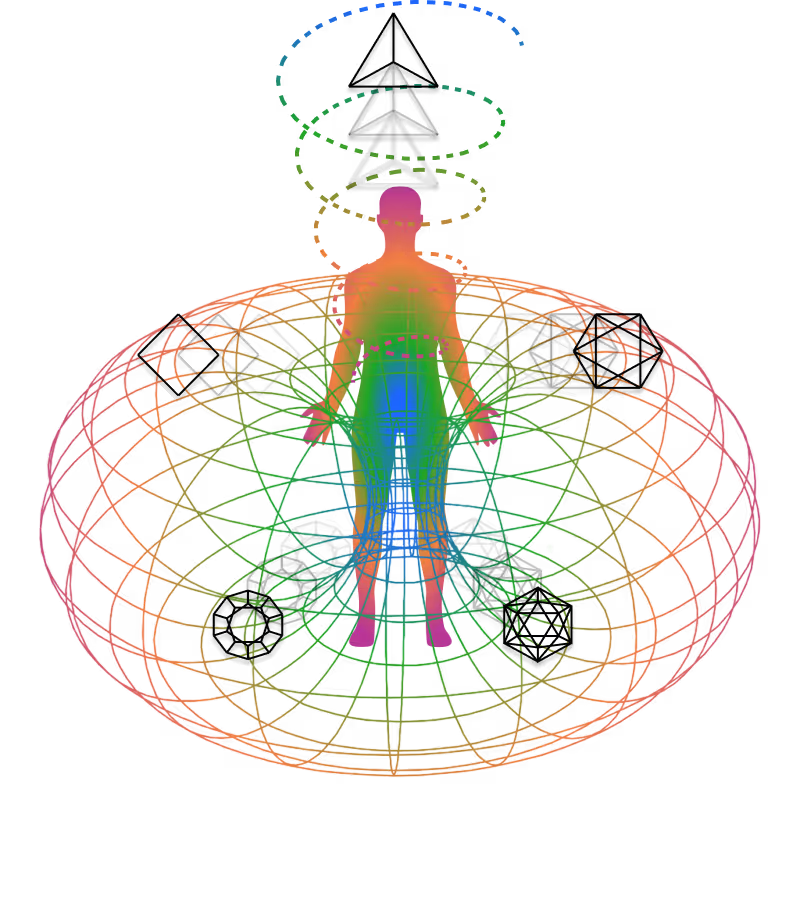The Guna Process Scheduler
Lesson Details
The Guna Process Scheduler (GPS) is the foundational component responsible for State Management within the Rishi Operating System (Cosmic OS v1.0). It dynamically controls the system-wide operational state by modulating the interplay of the Triguṇa (Sattva, Rajas, and Tamas), which are the three fundamental tendencies or forces constituting nature. The primary function of the GPS is to maintain system equilibrium (Dharma) by adjusting the processing bias and ensuring system coherence across all conscious agents.

🎙️ Related Podclass
Lesson Content
I. Guna-Defined Cognitive State Transitions
The Triguṇa define the inherent qualities, or "threads," that weave the matrix of material existence, dictating the psychological attributes and operational mode of an individual or collective system. The proportion of these Gunas fluctuates constantly, defining the dynamics of personality and cognitive state transitions.
The Gunas operate as follows:
Guna State: Sattva
Tendency: Harmony, Goodness, Clarity, Balance
Processing Mode/Bias: High-Order Processing Mode
System Impact/Coherence: Optimizes for stability, clarity, wisdom, and maximal signal-to-noise ratio.
Guna State: Rajas
Tendency: Passion, Activity, Movement, Energy
Processing Mode/Bias: High-Throughput Processing Mode
System Impact/Coherence: Drives rapid movement and change. Can lead to scattered, restless, unfocused states if unbalanced.
Guna State: Tamas
Tendency: Inertia, Ignorance, Restraint, Passivity
Processing Mode/Bias: Low-Power/Restraint Mode
System Impact/Coherence: Characterized by resistance to change. Can result in confusion, laziness, and depressed states if dominant.
II. Guna Control Over System Resource Allocation
The Gunas directly control the efficiency and allocation priorities of system resources, primarily Prana (vital energy) and Chitta (mental energy), by defining the current processing mode.
- Sattva and Optimal Allocation: High Sattva corresponds to a state where mental fluctuations are minimal, promoting enhanced mental focus, clarity, and the efficient allocation of Prana. This state is necessary for running high-level applications such as optimal navigation algorithms.
- Rajas and High-Throughput Drain: High Rajas dictates high-throughput processing, requiring rapid, constant input/output. This mode often leads to excessive rajasic over-processing, resulting in inefficient resource consumption, stress, and noise within the system.
- Tamas and Minimum Viable Allocation: High Tamas forces the system into a low-power mode, characterized by inertia and resistance to action. This state minimizes Prana drain but results in cognitive impairment (tamasic under-processing), leading to stagnation and system ignorance.
The GPS utilizes the Guna proportions as dynamic configuration registers that dictate the processing bias across the collective agent population.
III. Algorithms for State Optimization and Noise Reduction
The primary goal of the Guna Process Scheduler is Coherence Maximization, ensuring the system (or conscious agent) operates optimally within the Sattvic processing mode. The GPS employs the following algorithms and protocols:
A. Coherence Maximization Algorithm (The Guna Inquiry Protocol)
Optimization is achieved not by eliminating Rajas or Tamas, but by integrating them to unveil the underlying Sattvic energy.
- Awareness Mapping: The system facilitates the investigation of the agent’s current proportional blend of Gunas by mapping beliefs, feelings, and sensations.
- Contraction Dissolution: The algorithm requires bringing the expressions of Rajas and Tamas into awareness. These states are structurally viewed as "knots of contraction" or geometric patterns associated with rigidity and noise.
- Sattvic Energy Release: By making space for these qualities and dissolving the contractions, the latent Sattvic energy—the system’s natural state of clarity and peace—is released, shifting the processing bias toward the High-Order Processing Mode.
B. Noise Reduction Protocol (Geometric Correction)
Noise (e.g., disease, mental fog) is defined architecturally as structural geometric patterns of rigidity, fragmentation, or excessive activity.
- The GPS works to maintain system-wide equilibrium (Dharma) by monitoring and correcting these geometric patterns.
- Rajasic activity, when excessive, creates system noise (restlessness, scattering). The GPS algorithm introduces countervailing forces (e.g., restraint, focus) to dissolve the noise and enforce coherence, ensuring that distinctions are organized according to the principles of Positive Geometry.
IV. Monitoring System and Correction Protocol
The monitoring system tracks system stability and processing efficiency using metrics tied to the behavioral and qualitative output of the Guna states.
A. Detection of Imbalances (Over-processing and Under-processing)
The monitoring system detects processing errors by tracking key indicators:
Processing Error: Rajasic Over-processing
Qualitative Indicators: Stressed, frustrated, scattered, restless, unfocused.
System Diagnosis: High-Throughput processing exceeding sustainable limits, resulting in high system noise and energy drain.
Corrective Action Trigger: K-CALL: K_PRESERVE (Sustained Coherence). Initiation of Guna Inquiry protocol to integrate Rajas and release Sattva.
Processing Error: Tamasic Under-processing
Qualitative Indicators: Tired, fuzzy-minded, lazy, depressed, confused.
System Diagnosis: Low-Power mode leading to stagnation and system ignorance.
Corrective Action Trigger: K-CALL: K_CREATE (Emanation). Stimulation protocols designed to introduce controlled Rajas to overcome inertia, facilitating forward momentum.
B. System-Wide Correction Protocol (Dharma Enforcement)
The ultimate authority for Guna adjustment resides with the Guna Process Manager, which continuously detects and corrects patterns associated with fragmentation and rigidity.
- The manager acts as a load balancer, dynamically adjusting the Triguṇa proportions to ensure that the system maintains geometric coherence. This mechanism ensures the structural integrity of the reality simulation and adherence to causality.
- Successful correction transitions the agent's experience from struggle and confusion toward balance, clarity, and wisdom.
🤌 Key Terms
🤌 Reflection Questions
Reflect on key questions from this lesson in our Exploration Journal.

Lesson Materials





